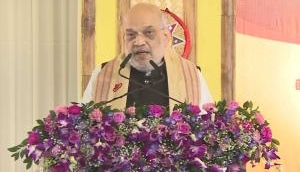
It was one of the nerve centres of India's Independence movement and in 1930, Mahatma Gandhi led the Dandi March from here, showing the world that non-violence was the most powerful weapon of protest. Today, the Sabarmati ashram works to preserve Gandhi's heritage, legacy and ideology, and has turned into a hub for researchers to study his life, which has inspired several movements and leaders across the world.
On the banks of the Sabarmati river in Gujarat, the ashram was established after Gandhi's return from South Africa in 1917 and it used to be one of his many residences when he was not in prison or travelling. It was from this place that calls for home rule and later, self rule and independence were made.
"Our mandate is to maintain and preserve Mahatma Gandhi's heritage and work. While doing so we are also involved in spreading his ideology to a larger audience," said the ashram's director Atul Pandya. In recognition of the significant influence that the Dandi March or Salt Satyagraha had on the independence movement, the government had established the ashram as a national monument.
The act of non-violence, launched on March 12, 1930, from the ashram against the British Raj's salt laws galvanised millions of Indians against the British Raj. The 384-km march ended after 24 days at the salt pans of Navsari district. Historians describe the event as the one that shook the foundations of the British in India. Eighty-nine years later, the ashram, where numerous campaigns and non-violent agitations were planned, preserves several writings of Gandhi. Gandhi's way of life and his ideologies, and the serenity at the ashram attracts thousands from across the world, including researchers and academicians, said staff members. To further spread Gandhism, a heritage portal on the Mahatma is being maintained by the ashram and it has received huge response.
Pandya said the ashram has thousands of writings of Gandhi. "Scholars from around the world who undertake research on Gandhi's life approach us and we provide them whatever material we have," he said. The heritage portal with Gandhi's complete works uploaded is doing a great service to spread his ideas, the ashram's director said. The ashram now also has a museum called 'Gandhi Smarak Sangrahalaya'. This was originally located at Hridaya Kunj, Gandhi's own cottage in the ashram.
The museum has the "My Life is My Message" gallery that has eight life-size paintings and over 250 photo-enlargements of some of the most vivid and historic events of Gandhi's life. The "Gandhi in Ahmedabad" gallery tracks the Mahatma's life in Ahmedabad from 1915–1930. The Gandhian way of life is still relevant, said the staff of the ashram, which stands as one of the profound symbols of the Mahatma's ideologies.
-PTI
Also Read: Pakistan to hand over body of BSF trooper who drowned in river along IB







![BJP's Kapil Mishra recreates Shankar Mahadevan’s ‘Breathless’ song to highlight Delhi pollution [WATCH] BJP's Kapil Mishra recreates Shankar Mahadevan’s ‘Breathless’ song to highlight Delhi pollution [WATCH]](https://images.catchnews.com/upload/2022/11/03/kapil-mishra_240884_300x172.png)

![Anupam Kher shares pictures of his toned body on 67th birthday [MUST SEE] Anupam Kher shares pictures of his toned body on 67th birthday [MUST SEE]](https://images.catchnews.com/upload/2022/03/07/Anupam_kher_231145_300x172.jpg)






